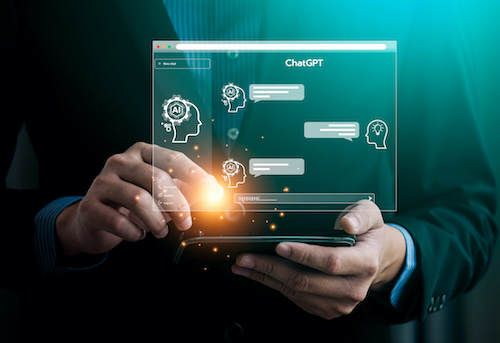Key points:
- The explosion of AI tools has introduced interesting questions for educators
- Students who learn to use AI responsibly will develop a useful skill for learning and working
- See related article: Education in the age of AI and smart technology
- Everything You Need To Know About AI In Education
From the very beginning of its meteoric rise, generative artificial intelligence (AI) tools seemed to stir a universal reaction: How will students use it to cheat? However, students engaged in cheating well before tools like ChatGPT became household names. According to a survey, as many as 58 percent of high school students have plagiarized work, and 95 percent admitted to some form of cheating.
There are countless past innovations, from handheld calculators to Wikipedia, that have prompted similar classroom concerns. In each of these cases, teachers evolved, adopting new strategies and tools to keep students learning. As AI matures, educators will need to do the same. Many teachers already are rethinking assessments and assignments to shift the question from how students will use AI to cheat, to how students can learn to use AI responsibly.
Set clear expectations
An effective first step teachers can take is to empower students to use AI with clear guidance. Setting expectations about when AI is useful and effective, how students can use these tools, and providing best practice guidance sets the right foundation for students. Guidelines could include what stage of writing an essay students can use AI–for example, using it to brainstorm a topic, conduct research, or to revise a conclusion. Teachers can establish parameters that include having students provide the prompts they used to get the information. Setting these expectations reinforces the notion that AI is a tool and provides students the opportunity to think about their process, not just the end result.
Reinforce higher-order thinking skills
The rise of AI also provides an opportunity for teachers to embrace instructional practices that move away from memorization and toward higher-order thinking. Assignments that ask students to produce answers using AI can encourage students to critically consider the information provided. Students analyze, evaluate, and critique the technology’s answers in order to build strong information literacy skills. Such an approach also provides the opportunity for educators to discuss and highlight the ways AI tools provide inaccurate information. Comparing AI-generated content to scholarly evidence can build students’ skills even further and help them learn to synthesize information to create their own viewpoints.
Turn AI plagiarism into a teaching moment
Despite setting expectations and engaging in conversations about the effective use of AI, some students may still choose to use tools to plagiarize work. Plagiarism detection tools can make it easier to identify when students have used AI in an assignment. However, many of the most effective teachers understand reacting to plagiarism in a punitive way is unproductive. Punishing plagiarism places outsized emphasis on the answer rather than the process and shifts students’ focus.
Turning AI-based plagiarism into a positive, rather than punitive, learning experience can be as easy as using plagiarism detection tools with a new mindset. Instead of solely trying to catch students cheating, educators can leverage detection tools as another way to collect learning data and uncover teachable moments. When detection tools find that students are using too much AI in their work or not paraphrasing, teachers can start conversations about how to conduct research, cite the work of others, and synthesize information into the student’s authentic voice.
Generative AI is undoubtedly more than a passing trend; it’s a transformative force that will shape the way students learn and eventually work. Students who learn to use AI responsibly and skillfully to create authentic, integrity-based work will benefit beyond a single assignment or grade. They’ll develop a cornerstone skill that can support their success throughout their academic journeys and future careers.
Related: Embracing AI for limitless learning potential
- 4 ways to encourage play in education - April 25, 2024
- CoSN IT Leader Spotlight: Lisa Higgins - April 25, 2024
- It’s time to pay student teachers - April 25, 2024

